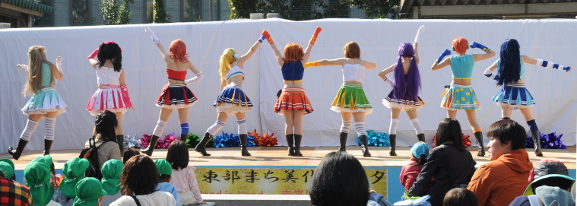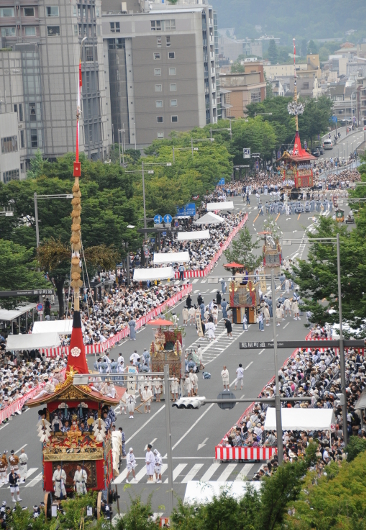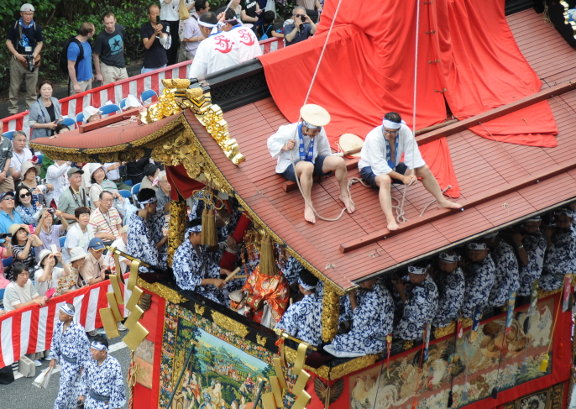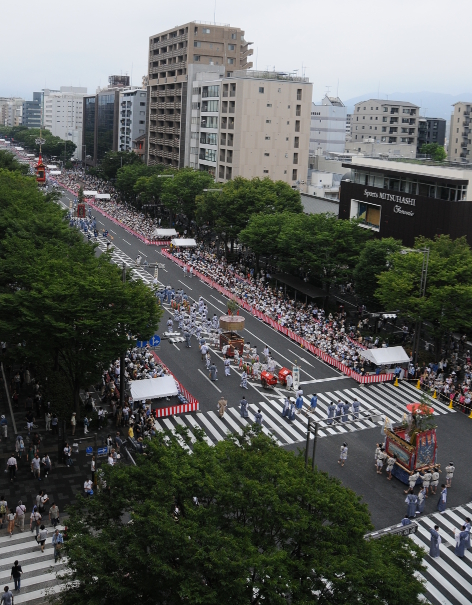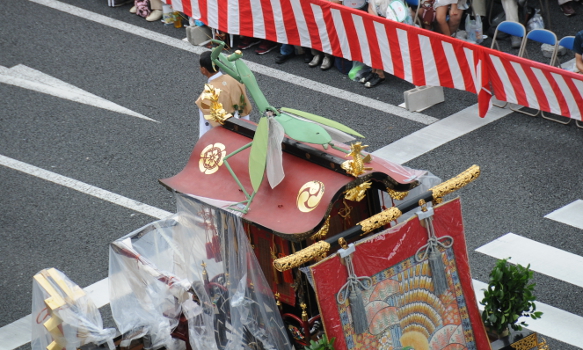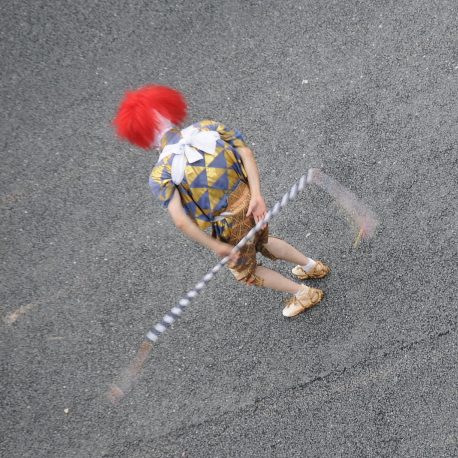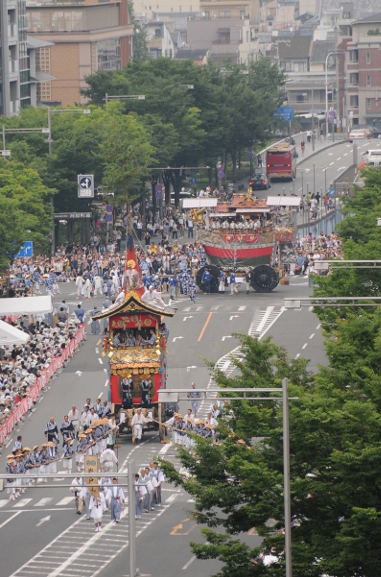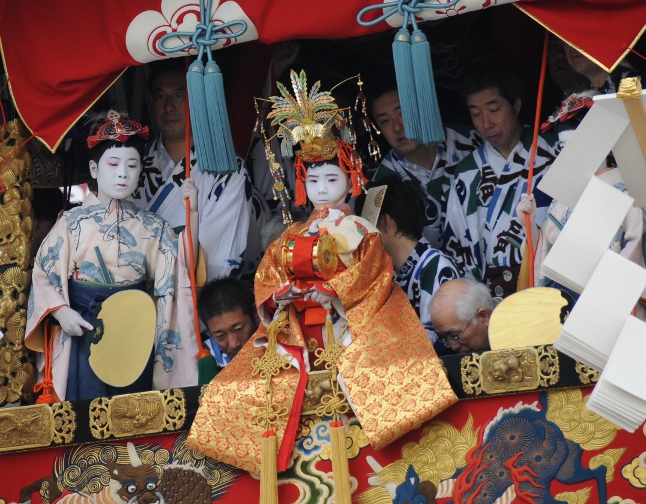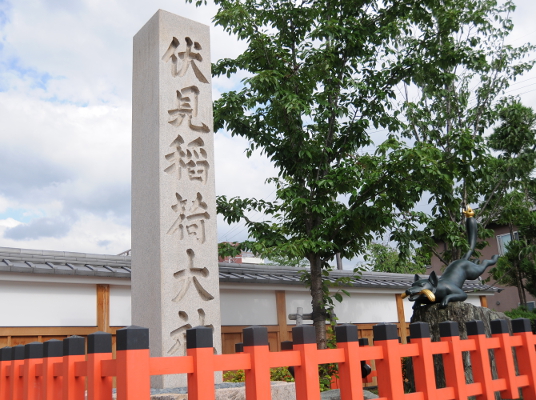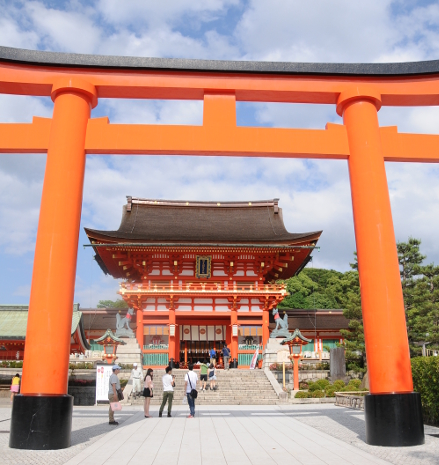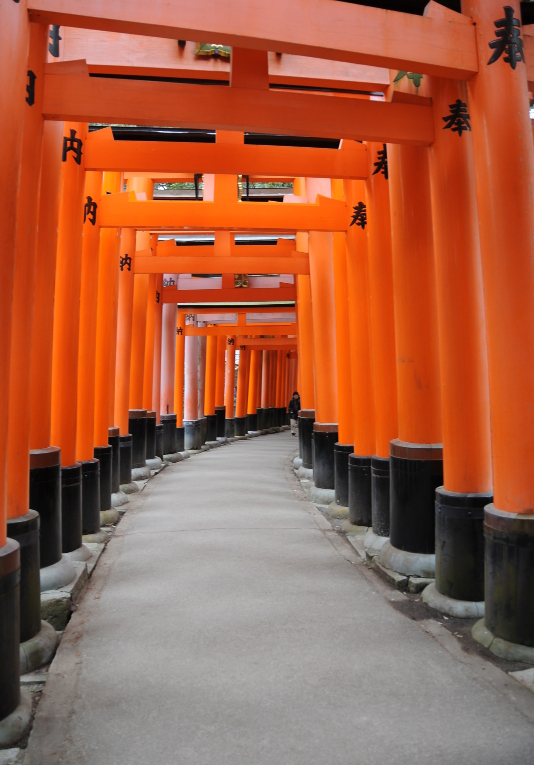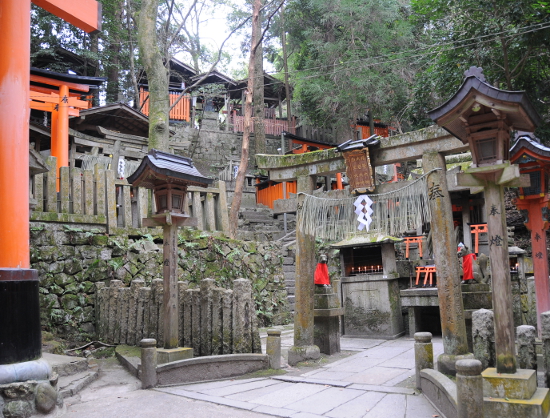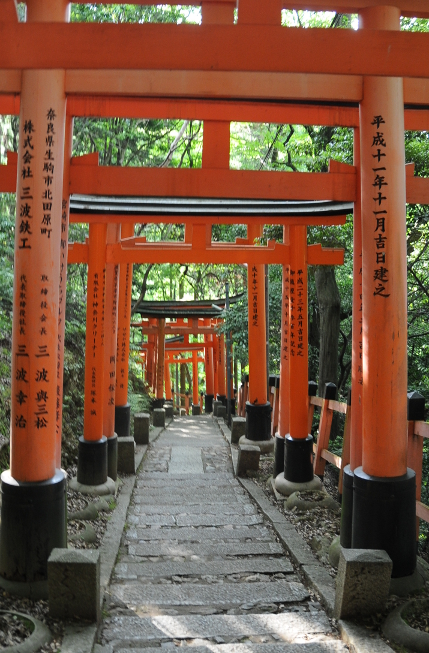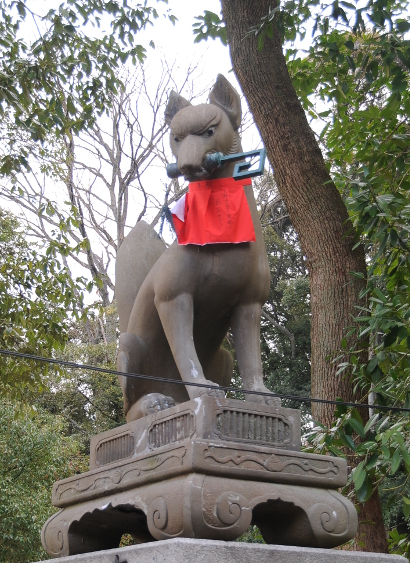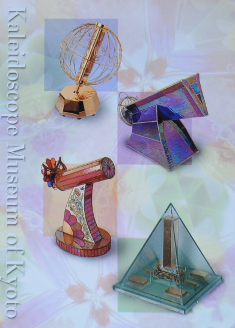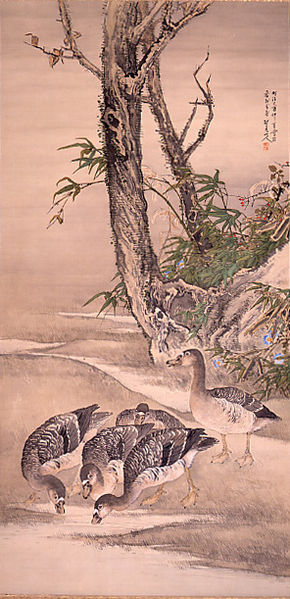Entertaining guests – especially if one is determined to do it well – is not an easy thing to do. Raise it to the level of state guests, and walking the delicate line between entertainment and representation almost becomes an art. Heads of state and other dignitaries are treated to intimate views of national landmarks, personal meetings with local celebrities, and a walk past a military guard; all of these usually accompanied by numerous cameras. But once they are turned off, the guests are briskly whisked away – but where to?
In Japan, one of the places such illustrious guests are taken to is the Kyoto State Guest House. Situated in the park of the Imperial palace, the house – or rather, the complex consisting of several buildings on two floors – consists of some 8.000 square metres of floor space on each level, located in a separate, walled-in park of more than 20.000 square metres. Usually, the guest house is off-limits to the public, but a few times a year, special openings are held where the official part of the building can be admired.
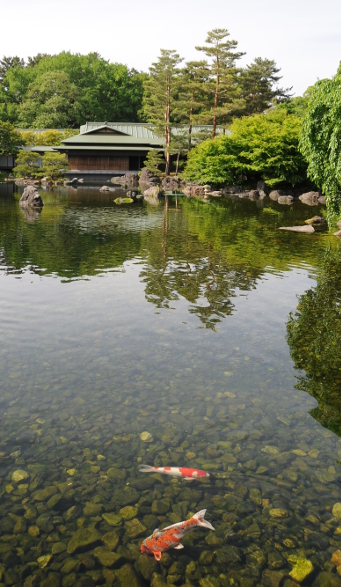 Having passed through the main entrance and the Juraku-no-ma lobby, one enters the conference room called Yubae-no-ma. The room itself is in a rather sober Western style, but each of its short sides is decorated with a tapestry 2.3 x 8.6 metres high, depicting the moon over Mount Hiei on the east wall, and the sunset behind Mount Atago on the west wall, mirroring Kyoto’s true layout.
Having passed through the main entrance and the Juraku-no-ma lobby, one enters the conference room called Yubae-no-ma. The room itself is in a rather sober Western style, but each of its short sides is decorated with a tapestry 2.3 x 8.6 metres high, depicting the moon over Mount Hiei on the east wall, and the sunset behind Mount Atago on the west wall, mirroring Kyoto’s true layout.
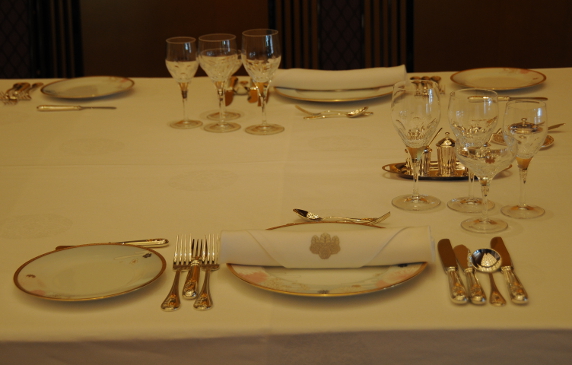 Beyond this is the Fuji-no-ma Banquet Hall, the largest room in the guest house, which can seat up to 120 guests. Again, a huge tapestry of 3.1 x 16.6 metres adorns the main wall and behind a number of sliding doors hides a stage, where music or dances are performed as dinner entertainment. A table setting like the one above is used at such dinners, coordinated to the latest detail. The embroidery on the napkin shows the Japanese state seal by the way, a stylised image of a Paulownia, going back to at least the 17th century.
Beyond this is the Fuji-no-ma Banquet Hall, the largest room in the guest house, which can seat up to 120 guests. Again, a huge tapestry of 3.1 x 16.6 metres adorns the main wall and behind a number of sliding doors hides a stage, where music or dances are performed as dinner entertainment. A table setting like the one above is used at such dinners, coordinated to the latest detail. The embroidery on the napkin shows the Japanese state seal by the way, a stylised image of a Paulownia, going back to at least the 17th century.
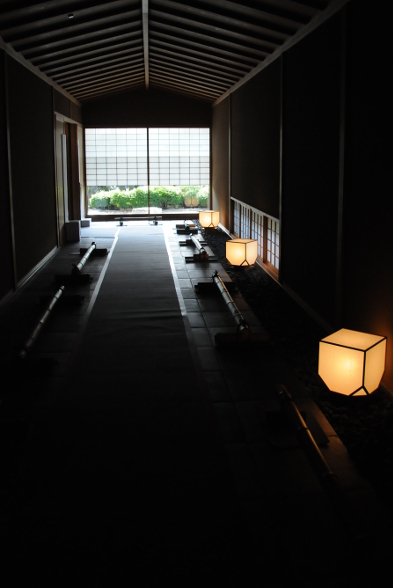 From here a dark and comparatively narrow hallway reminiscent of old Gion leads to the Kiri-no-ma, a small, almost intimate Banquet room in Japanese style. This room with its tatami and low chairs seats only 24 people, but it does so extremely stylishly on a 12 metre long, black-lacquered table made from a single piece of wood. The low chairs again bear the Paulownia seal on their backs.
From here a dark and comparatively narrow hallway reminiscent of old Gion leads to the Kiri-no-ma, a small, almost intimate Banquet room in Japanese style. This room with its tatami and low chairs seats only 24 people, but it does so extremely stylishly on a 12 metre long, black-lacquered table made from a single piece of wood. The low chairs again bear the Paulownia seal on their backs.
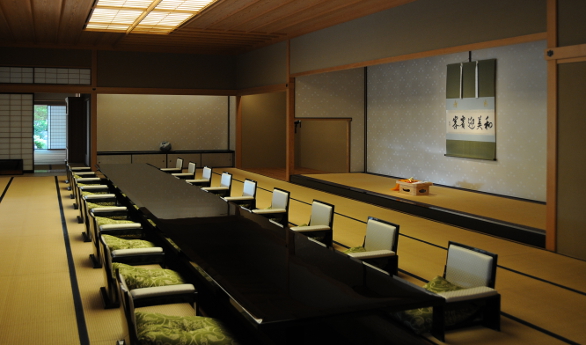 The rooms beyond that – in particular the private guest rooms – remain closed, so from this final room that is open to the public, visitors are led back to the entrance. On this last path one has the opportunity to admire the large garden with the obligatory pond that lies at the centre of the whole complex. The design concept behind it is complete harmonisation of the garden and house, and it has been accomplished very well indeed.
The rooms beyond that – in particular the private guest rooms – remain closed, so from this final room that is open to the public, visitors are led back to the entrance. On this last path one has the opportunity to admire the large garden with the obligatory pond that lies at the centre of the whole complex. The design concept behind it is complete harmonisation of the garden and house, and it has been accomplished very well indeed.
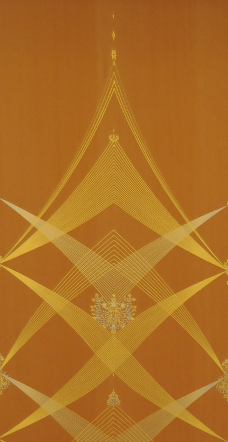 Interestingly, the house, built only in 2005, is made of reinforced concrete, but the traditional Japanese interior design with its paper sliding doors, wood panels and floor lamps easily conceals this. Still, when you think of it, this is nothing more than a hotel, so the feeling conveyed is cool understatement, and the furniture and other decor are functional and sparse. At the same time, the devil expecting to impress hides in the details, only for the initiated to find and appreciate: The furniture is handmade using traditional craftsmanship, the decorations on sliding doors and furniture are pure gold, the strategically placed artwork only comes from the most renowned Japanese artists, and the lacquered table you see in the picture above must have taken years to make and is doubtlessly worth a fortune.
Interestingly, the house, built only in 2005, is made of reinforced concrete, but the traditional Japanese interior design with its paper sliding doors, wood panels and floor lamps easily conceals this. Still, when you think of it, this is nothing more than a hotel, so the feeling conveyed is cool understatement, and the furniture and other decor are functional and sparse. At the same time, the devil expecting to impress hides in the details, only for the initiated to find and appreciate: The furniture is handmade using traditional craftsmanship, the decorations on sliding doors and furniture are pure gold, the strategically placed artwork only comes from the most renowned Japanese artists, and the lacquered table you see in the picture above must have taken years to make and is doubtlessly worth a fortune.
I have only posted very few pictures of my own this time, but in fact, you can take a video tour of Kyoto State Guest House yourself; it even includes one additional room we were not allowed in. Have a look here – enjoy!
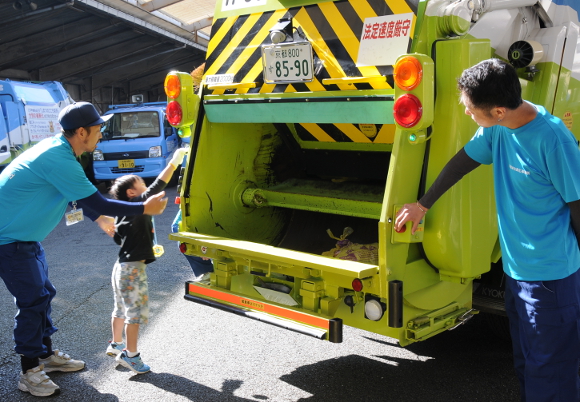 In any case, being the nerd I am, I found out that all over Kyoto, there are 7 such garages, with a total of 188 garbage trucks (mine only has 15), and each truck has a capacity of 2 tons. For a city like Kyoto with 1.5 million inhabitants, that does not sound like very much, but remember that those trucks are on the road almost every single day, with only very few holidays, for New Year, for example.
In any case, being the nerd I am, I found out that all over Kyoto, there are 7 such garages, with a total of 188 garbage trucks (mine only has 15), and each truck has a capacity of 2 tons. For a city like Kyoto with 1.5 million inhabitants, that does not sound like very much, but remember that those trucks are on the road almost every single day, with only very few holidays, for New Year, for example.